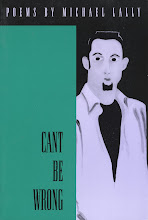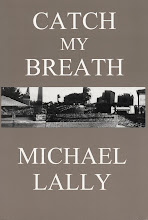
Subtitled: The Life and Times of an American Original, this new biography of Monk pretty much lives up to that claim, if not entirely.
The author, Robin D. G. Kelley does a great job mining as much of his extensive research as seems possible to try and deconstruct the myths that were developing it seems as soon as Monk began his career as a professional jazz pianist and composer.
I've been following Monk since I was a teenager when he was finally beginning to get some public recognition, though still years before he made the cover of TIME, a cover I framed when it came out and still have on my wall.
Monk has always been an iconic figure to me, and a challenge. Part of the reason I gave up playing piano professionally was because his genius seemed so far beyond anything I was capable of accomplishing I decided to devote all my time and energy to writing, particularly my poetry, where I felt I was doing something uniquely my own as Monk was with his music.
But even though it took me years of studying—in the beginning almost all of it self-taught in an autodidact way—and false starts and obsessive reading and imitating poetic techniques and strategies and styles until I could finally incorporate them into my own original impulses and talent, it never occurred to me that Monk had done the same until reading this book.
To learn in these pages that Monk actually learned tunes straight, incorporating their original composers' or interpreters' renditions and then reworked them over and over replacing the older standard techniques with his own original harmonics and chord diminishments (I don't mean that in the sense of a diminished 7th but in the sense that he actually would drop two of the triad notes in the middle of a seventh chord to give a sense of space and simplicity but also a kind of disorienting something's-not-right and yet...sound to it that some mistook for discordance or "wrong notes" because he'd end up with two distant notes whose tones were only a step or a half step away from each other, if you see what I mean).
Kelley explains a lot of this stuff in musical terms that are relatively easy for me to get or to try on the piano and then get, though it might be a little arcane for those who don't play music or read it. He also uses a lot of personal accounts by many who played with Monk and knew his techniques and strategies firsthand, as well as Kelley's own descriptions of tapes, made by Monk himself with his wife Nellie's help when he was practicing or composing at home, or by fans when he was working out arrangements for new songs or breaking in new band members while gigging at The Five Spot or other venues, or alternative takes or false starts in recording sessions that were also caught on tape.
It would be great to have a CD with some of that stuff on it to go along with this book. But just picturing Monk going through the process of learning songs of other composers and making them his own not only made me smile, but comforted me, to realize how much harder he worked to create that unique sound that as a kid I somehow thought just came out of him as a result of his inspiring and inspired musical genius. Which, of course, is true, but he started where the rest of us do, which makes his accomplishment even more impressive.
Anyway, it's a great biography. Up there now as part of a trinity of my favorite biographies of American music originals with the two volume bio of Elvis by Peter Guralnick—LAST TRAIN TO MEMPHIS and CARELESS LOVE—and the first volume (I'm still waiting for the second) of Gary Giddens' bio of Bing Crosby: A POCKETFUL OF DREAMS.
Like those, THELONIOUS MONK: The Life and Times of an American Original is full of details maybe only an obsessive reader and fan of these particular musical "geniuses" can dig (obviously Monk was more of the genius since he wrote a lot of the music he played so uniquely, but Bing's interpretive innovative originality was an enormous influence and had a much more widespread impact on "American" music, as did Elvis's remix and reinterpretation of country and rhythm and blues).
There is much that remains mysterious and enigmatic about Monk that this book doesn't resolve, except to lay to rest the myths of the naive primitivist or childlike saintly presence etc. that often surrounded Monk's persona, and expose some of the more mundane aspects of the life of a genius as well as extend our knowledge a bit of the underlying mental disorders that generated a lot of Monk's more erratic and unreliable behaviors.
But in the end, no matter how often this Monk biography resorts to descriptions and lists of gigs and recording dates, for anyone who loves Monk's music, it's still a revelatory experience to read and a satisfying one as well.
















5 comments:
As a teenager in Iowa I first started listening to jazz on a local late night college radio station.
I picked up a Monk album around that time. I guess I am more a casual listener — not a musician or student like you — but there is something about Monk that always delights me.
When I started making compilation tapes for myself I usually included Just a Gigalo. It must have been on vinyl, I no longer have it. It was a “live” solo version. It really sounded like it was between sets, lots of talking and extraneous noise. I always imagined Monk was noodling, working things out, on his break.
I could never really explain to others why I liked it so much. You nailed it: “. . . a sense of space and simplicity but also a kind of disorienting something's-not-right and yet . . .” For me that disorientation is the thing. It lasts for half a second and then I say “yea” to myself.
(The tune is on Solo Monk, studio recorded, which I do have.)
Yeah, something about Monk's music gets me too. I've always loved the angles in his melodies where rhythm also plays such a strong role.
The myth that surrounds Monk's genius reminds me of a similar fable which is accepted as truth. I am referring to the way Rosa Park's act of inspired, courageous and conscious rebellion gets described. Often, or maybe always, Rosa's story is told as though she were a tired woman who wanted to stay seated after a hard day's work. While that may be true, Rosa Parks was also a hard fighting, dedicated, civil rights activist, who was taking action in a well thought out and purposeful manner. I'm not surprised to learn that Monk, like Parks, was not naive.
That myth denigrates the work, dedication and thought behind the success of black people in many professions, couched as a compliment.
“It comes easily, they’re naturals, no work required.”
That’s seldom the case. Two come to mind. Chicago had a great football player, Walter Payton, whose dedication to training and practice was legendary. Wasn’t Coltrane noted for his work ethic?
Butch, well put. “It comes easily, they’re naturals, no work required.” - exactly what I was getting at.
Coltrane (like Hendrix) was rumored to practice to the point of falling asleep with his horn. Reminds me of a local musician I know who recently lamented to me that he no longer has the time in his schedule to practice his instrument 10 hours a day like he used to...
Miles, point(s) well taken, and well made.
Post a Comment